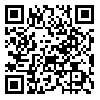BibTeX | RIS | EndNote | Medlars | ProCite | Reference Manager | RefWorks
Send citation to:
URL: http://jpcp.uswr.ac.ir/article-1-331-fa.html
Objective: Similarities and differences among mood disorders can help psychiatrics in their exact diagnosis and more effective treatments. Therefore, the current research sought to identify differences between patients with bipolar disorder, major depressive disorder, and nonclinical group in emotional schemas.
Methods: The present research was a cross-sectional study. The research sample consisted of 102 subjects (34 bipolar disorders, 34 with major depressive disorder, and 34 nonclinical) that selected by convenience sampling. They were matched for sex, age, and educational level. Subjects were diagnosed by Structured Clinical Interview for DSM disorders (SCID) and their mood was rated by Young mania rating scale (YMRS) and Beck depression inventory (BDI). General health questionnaire (GHQ) was also used for nonclinical population. Then, all three groups were asked to fill out the Leahy emotional schemas (LESS). Data were analyzed by ANOVA.
Results: The scores on LESS in patients with bipolar and major depressive disorders were significantly different from the nonclinical groups. But there was not difference between them. Compared to two clinical groups, the healthy group reported greater scores in adaptive emotional schemas such as validation F(2,98)=21.03, p<0.0001, values F(2,97)=9.34, p<0.0001, acceptance F(2,93)=15.14, p<0.0001, and expression F(2,99)=8.19, p<0.001. But there were not significant difference in maladaptive emotional schemas except blame schema F(2,97)=17.24, p<0.0001. In fact, this schema was higher in patient with major depression disorder than the other two groups.
Conclusion: Since there was no significant difference between clinical groups, these schemes are likely to be common elements between the clinical groups, so it seems that it is in line with transdiagnostic approach, However, further studies are required to illuminate specific and shared factors among bipolar disorder and major depressive disorder.
دریافت: 1394/7/6 | پذیرش: 1394/10/13 | انتشار: 1395/1/13
| بازنشر اطلاعات | |
 |
این مقاله تحت شرایط Creative Commons Attribution-NonCommercial 4.0 International License قابل بازنشر است. |



